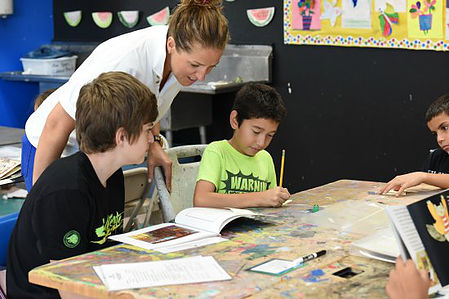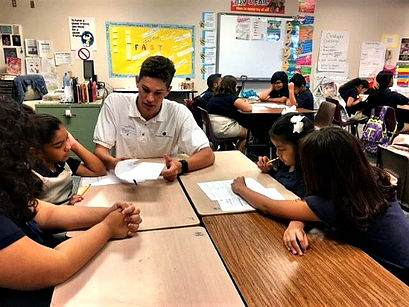
Arizona has a critical teacher shortage: at the start of the 2017-18 school year, there were 1,968 vacant teaching positions, and 3,408 teaching positions are filled with people who don’t meet standard teaching requirements (Arizona School Personnel Administrators Association, December 2017).
This problem disproportionately affects schools in under-resourced districts serving already marginalized communities – the schools that Read Better Be Better targets for service.
The negative effects of this crisis are evident across all aspects of schools – the administration, teachers and students.
In discussion with administrators of such districts, we have learned that a significant portion of those leaving the classroom are first-year teachers who feel under-prepared for success in today’s classrooms.
Student teaching in an upper-middle class community, for example, will present very different challenges to those faced by lower socio-economic communities.
Today’s teachers are more than just purveyors of information. Teaching has gone far beyond pedagogy, which means preparing teachers requires a diverse and multi-faceted approach.
As such, there is an opportunity — and indeed a need — for nonprofit organizations to partner with institutions of higher education to offer community-based solutions.
An Opportunity to Do Better
In 2015, Read Better Be Better developed a fledgling partnership with Mary Lou Fulton Teachers College and invited an initial cohort of student teachers from the University Service-Learning program to work as “Site Leaders” for our after-school program.
Ever committed to analytical rigor, we implemented a Head, Heart, and Hand evaluation with those student teachers to better understand what they knew about Arizona’s literacy crisis and how it disproportionately affects the low-income communities that we serve.
We discovered that students had limited knowledge of Arizona’s literacy crisis. The depth and complexity of the problem and how it affects our families and communities was something that they had learned from working with us, reading our literature, and fostering relationships with the teachers and students we serve.
In response, we saw an opportunity to do better.
Formalizing our workforce development program would have clear benefits for student or prospective teachers and their communities:
-
Authentic classroom management experience
-
Facilitated peer-learning to reflect upon their experiences
-
Formalized, regular professional development to better equip them for success in the classroom and beyond
-
Exposure to under-resourced and perhaps disenfranchised communities and the challenges they face
Implementing a Workforce Development Program for Site Leaders

Starting in the 2017-18 school year, all Read Better Be Better Site Leaders receive 6-8 hours of professional development prior to entering the classroom.
Training begins with a broad-stroke, social-justice-infused, motivational module and develops into a more focused and detailed technical training, following a site visit.
During a 10-week semester, each Site Leader then facilitates a classroom of 32 students as they work through a prescribed, highly structured curriculum and program activities.
Site Leaders are managed by District Leaders who are experienced educators hired to consistently monitor, coach, and evaluate Site Leaders on and off site.
District Leaders are also the facilitators of weekly peer-learning sessions. This meeting is an opportunity for all Site Leaders in each school district to come together to share stories, celebrate successes, and seek help with challenges.
In addition, all Site Leaders receive a bespoke series of monthly workshops designed specifically to meet their needs and executed by local content experts.
Topics include (but are not limited to):
-
Classroom Behavior Management
-
Cultural Awareness
-
Team-building
-
Literacy
-
Social Justice
Working Toward a Solution to Arizona’s Teacher Shortage
In developing and executing this extensive workforce development program with student teachers from across the valley, we have become further convinced that such partnerships between teacher’s colleges and education-focused nonprofits can form an effective component of the solution to the teacher shortage.
Our alumni feedback is fierce:
“Now I want to work in places where they need change and need help, because I am confident that I can do that.”
“Working with these diverse populations has given me the experience and education to positively and openly interact with students in the future. I now know that home life truly does affect how students act at school and there are things that I can do to help.”
“It’s actually kind of hard to describe how much RBBB has impacted me. The skills I’ve gained simply from running a classroom-like setting (even for such a short amount of time each week) have put me way ahead of the game in terms of teaching skills and classroom management. RBBB has also given me a new outlook on the education system in Arizona. It feels pretty great to know that I’m a small part of an organization that is actually changing the system and the kids that are trying to learn in it.”
When Site Leaders graduate from RBBB to continue their learning during clinical experience, we are confident and proud that they will be better educators and advocates in and beyond the classroom.
